Mexico is a cultural giant, one that keeps its history reflected all around, like living, breathing museum. Tulum, Monte Albán, Chichén Itzá, Palenque and Uxmal are all names that you have heard before and places you might have even visited. But a lot of people don’t know that there are over one hundred archeological sites and pyramids in Mexico, many of which are unknown.
For example, you most certainly have heard of Teotihuacán. Its majestic pyramids of the Sun and Moon are just a 40-minute drive from Mexico City. However, most tourists — and even some locals — don’t know that there are nineteen archeological sites in México state alone, with 193 sites spread across the country.
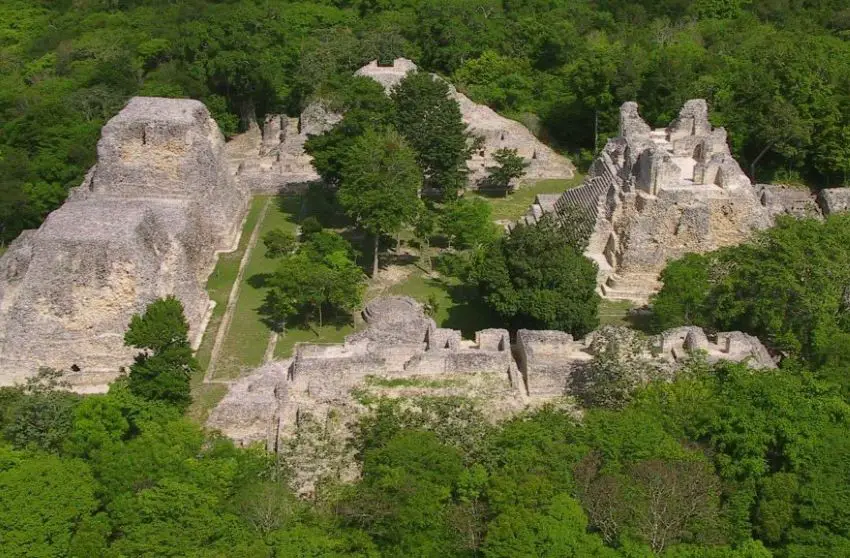
187 of these sites are open to the public. That’s 187 opportunities to visit some of the most interesting and beautiful rooms of the museum that is Mexico.
Here is a list of five archeological sites you probably haven’t heard of, located in Guanajuato, Jalisco, Campeche, Oaxaca and México state.
Cañada de la Virgen
This site is located only 16 kilometers southeast of the ever popular city of San Miguel de Allende, Guanajuato.
The main monuments in Cañada de la Virgen were utilized to study and observe the sky. The site itself was structurally planned to reflect the cosmic cycles of the lives of its Otomi inhabitants.
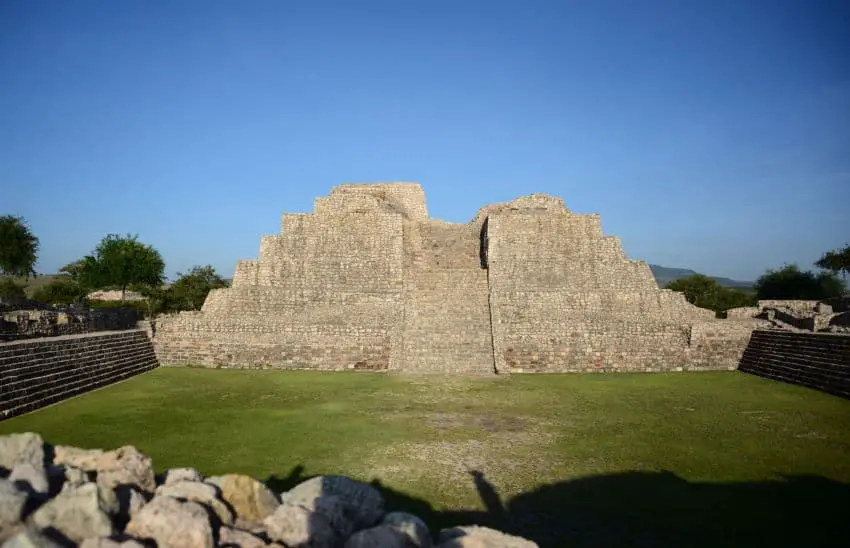
The site is interesting as it was not a residential area but instead a place of research and rituals. It has impressive acoustics which lets you communicate from any section of a structure to another without raising your voice.
A museum in the visitors’ center provides ample information about the activities that took place in Cañada de la Virgen.
You can visit from Tuesday to Sunday, from 10 a.m. to 6 p.m., with the last tour at 4 p.m. Tours last approximately two hours and cost 70 pesos per person and 20 for children under 12 years old. Children under five enter free.
Tenayuca
Tenayuca, in Tlanepantla, México state, is believed to have been founded in 1250 as the first Chichimeca capital in the Valley of Mexico. This site, whose name means “walled place” in Nahuatl, is home to an extraordinary pyramid crowned by twin temples built for the gods Tlaloc and Huitzilopochtli, surrounded by a wall of snakes. These features make the Tenayuca site the earliest example of the Mexica double pyramid, and it had strong links to the Mexicas of Tenochtitlán until the arrival of the Spanish.
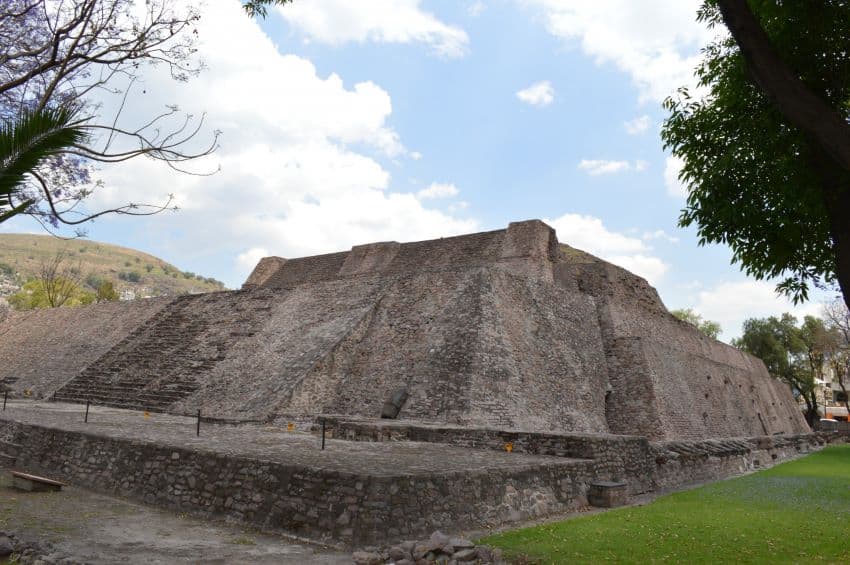
Historical records say that the Spanish named Tenayuca the “town of snakes” due to the many sculptured snakes adorning the walls of the pyramids and temples. One of the site’s temples is reported to have had around 600 snake heads adorning its walls.
Tenayuca is open Tuesday to Sunday from 10 a.m. to 5 p.m. and is conveniently located a short walk from the northern terminus of Line 3 of the Mexico City Metrobus. It has an entry fee of 70 pesos, with free entry for children under 13, students, teachers and senior citizens. It is also free for Mexicans on Sundays.
Becán
Becán is located in southeastern Campeche, within the Calakmul Biosphere Reserve. In Yucatec Maya, its name means “ravine formed by water.” This site was first settled between 600 and 300 BC, and by 300 – 250 b.C. it was transformed into a villa with a dense population. Its strategic location between the Gulf and the Caribbean gave it control over local commercial routes.
Becán’s buildings distinguish themselves from others by their unique layout and monumental heights. Additionally, they encompass a pit in the middle of the city that was part of an innovative watering system, used to draw the limits of the ceremonial area of Becán.
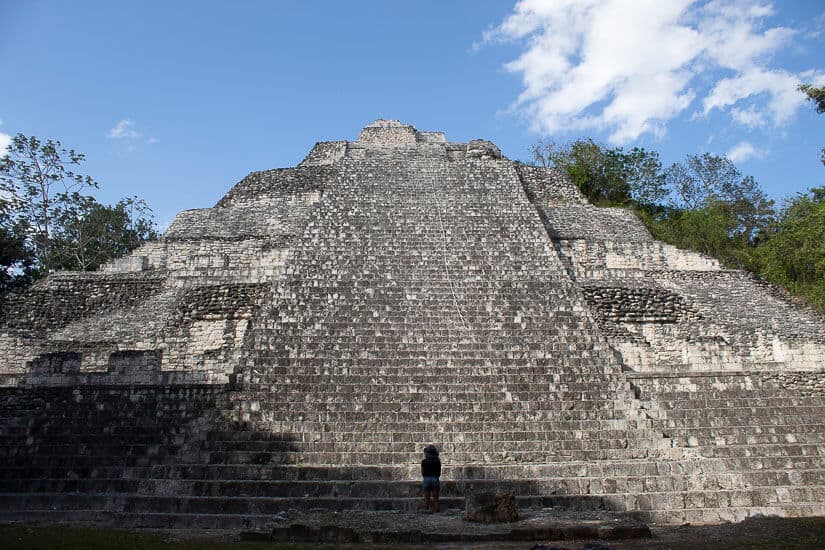
Around AD 1000, the city started to disintegrate and was occupied by other communities of greater economic and political strength. It was slowly forgotten and overrun by jungle, creating the remarkable site we see today.
You can visit this Becán any day of the week. The site is open from 8 a.m. to 4:45 p.m. Entry costs 80 pesos.
Huamelulpan
Some of Oaxaca’s ruins are also widely known, with Monte Albán and Mitla receiving a wide flow of visitors every year. However, the state has over ten archeological sites open for tourism, many of which are much less known.
The Huamelulpan ruins are located by the town of San Martín Huamelúlpam, around two hours west of Oaxaca City. This pre-Hispanic city dates to 400 BC and was an important urban center until 800 AD. It was principally populated by Mixtec groups, who had ever-changing and complicated relationships with Monte Albán and the tribes of the Oaxaca Valley.
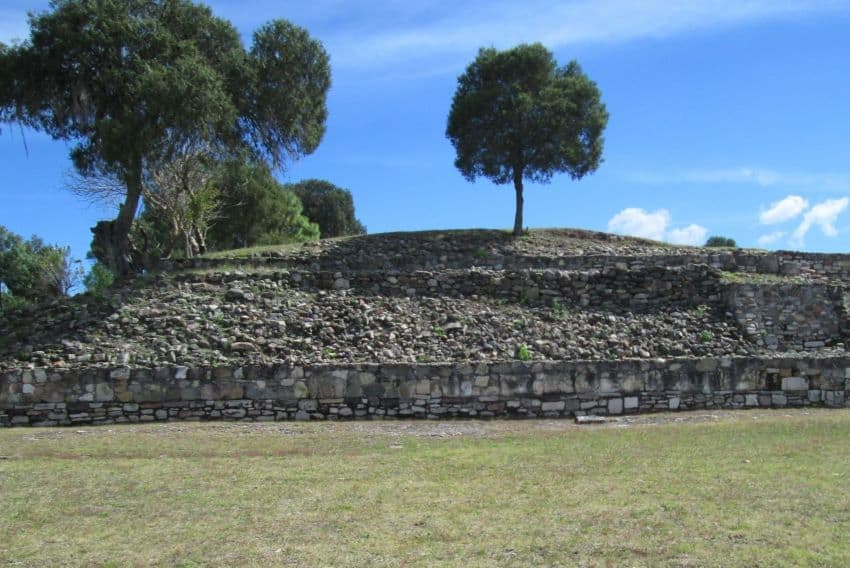
This site is not officially open to the public, meaning it doesn’t have any infrastructure or services. You can still visit it on your own though, every day of the week between 9:00 a.m. and 6:00 p.m.
Teuchtitlán (Guachimontones)
An hour and a half away from Guadalajara lies one of the most important sites in Western Mesoamerica, and a Unesco World Heritage site. It is also one of the most architecturally original sites in the country — and according to historians, Mesoamerica as a whole, with round and conic shapes as opposed to rectangular and pyramidal.
This site is 20 acres wide, and was one of the first big populated centers in the west. Its exact chronology is unknown, but it is estimated that it was populated by 40,000 people of the Teuchtitlán tradition during its peak. It was discovered only 50 years ago, in 1975.
You can visit this highly unique site for a fee of $50 pesos.
Montserrat Castro Gómez is a freelance writer and translator from Querétaro, México.
